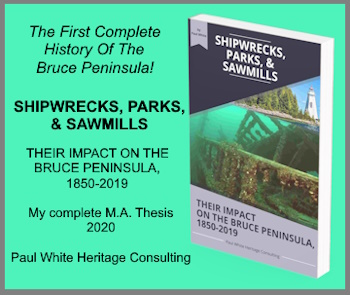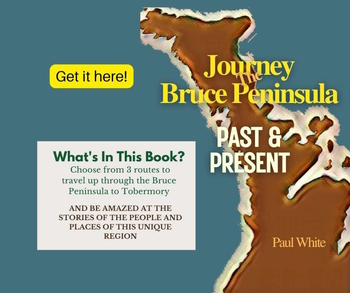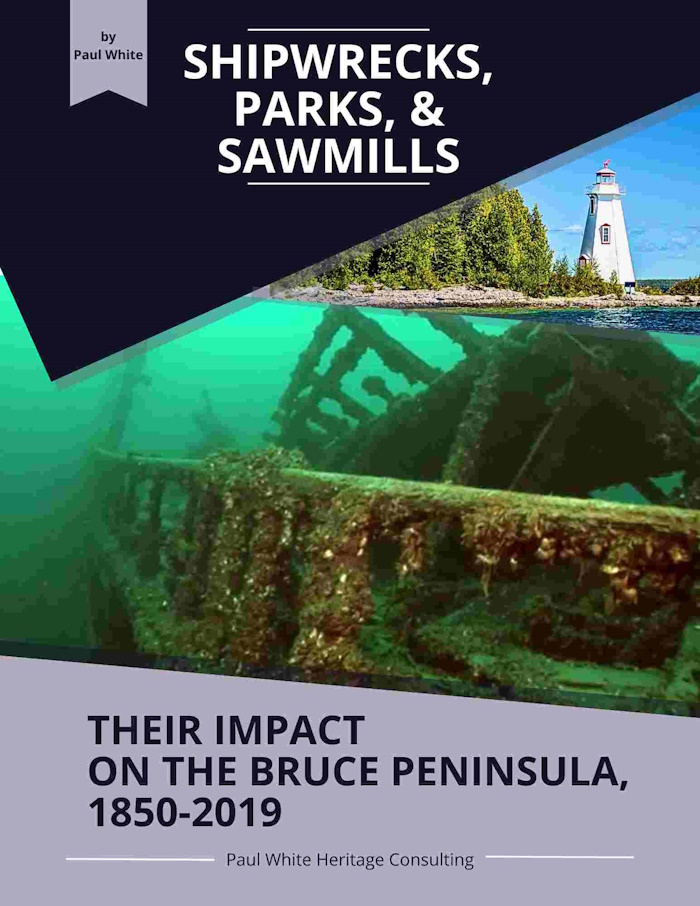Building the Garafraxa Road
Building the Garafraxa Road was an imperative necessity to connecting the Grey and Bruce region to the rest of the Upper Canadian colony.
In modern times we take travel on our roads and highways for granted. We get into our cars and drive to wherever our destination may be. The roads are smooth and usually well-maintained, making our trips by automobile relatively effortless. Unless, of course the roads are under construction!
Today when a new road is built through an area which previously did not have automobile access, it is a tough job. But with computers to design the route and heavy equipment to move earth, remove rocky barriers, and cross streams and rivers, the task is not as onerous as that faced by the builders of the first roads in this region.
One of the most frequently travelled roads in this area is Highway #6. It is also one of the first roads in the area. Highway #6 was originally known as the Garafraxa Road. The decision to create a land route between Guelph and Georgian Bay was made by the colonial government in the 1830s. However, due to the Upper Canadian Rebellion, it was not until 1837 that the government commissioned Charles Rankin to blaze a trail for the builders of the road to follow.
In order to blaze a trail, a pioneer surveyor would walk through the region looking for the best route. Once he chose the best path, the surveyor would walk along the route notching trees with his axe. The marked trees would guide the crews, who followed, where to clear the land for the road.
Have you ever noticed that Highway #6 has a lot of twists and turns, when it appears that the land surrounding the road would have facilitated a much straighter route? The reason dates back to 1837. Rankin wanted the Garafraxa road to follow the highest levels of ground in order to avoid the swamps and low-lying areas where water would make the road not only difficult to build, but also treacherous to travel.
Construction of the Garafraxa Road did not begin until 1841, almost four years after Rankin originally blazed the route. One of the reasons for the slow start on the road was that the government felt that Rankin's route was too long. So, they sent out another surveyor, John McDonald, to straighten out, and shorten the road. McDonald was also directed to "run a line" from just north of the present-day community of Mount Forest to the current southern limits of the city of Owen Sound. The rationale for this line would be to mark boundaries for proposed townships when settlement occurred in the region.
When Rankin had surveyed the route, he had tried to avoid the area which later would be known as the "Long Swamp" or the "Forty Mile Swamp." McDonald, however, chose to blaze his route directly through the swamp. This new route was as much as two and one-half miles east of Rankin's path.
Despite McDonald's efforts to shorten the route it ended up only three-quarters of a mile shorter than Rankin's original survey.
In 1841 a crew began clearing the Garafraxa Road. A.M. Stephens, a future mayor of Owen Sound, was a member of that road gang. Unfortunately, it took several years before the route was cleared completely. In the ensuing 15 or more decades, surveyors and road crews have continued to straighten and widen the Garafraxa Road.
The information used in this article came from many different sources including the memoirs of A.M. Stephens. Of primary importance were two local history books, Normanby Reflections; A History of Normanby Township and The History of Sullivan Township, 1850-1875.
A version of this article, "Building the Garafraxa Road" originally appeared in my Local History column on January 7, 2000 in the Owen Sound Sun Times.





